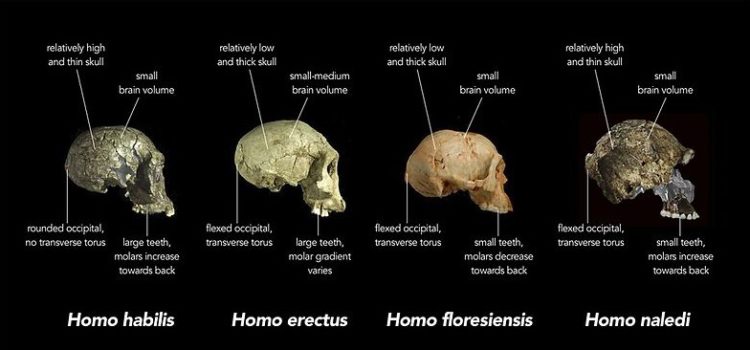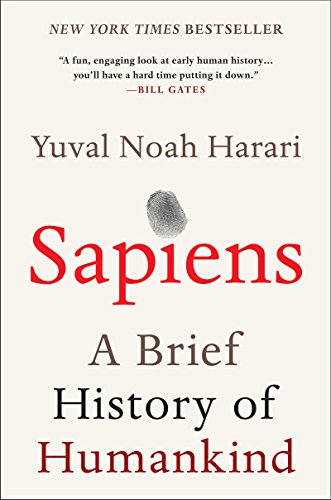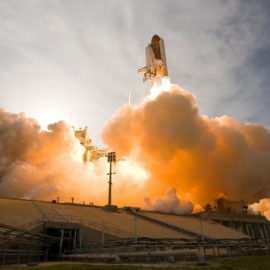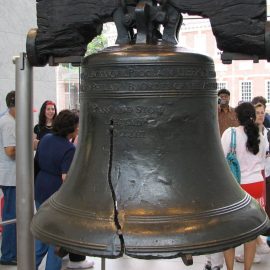

This article is an excerpt from the Shortform summary of "Sapiens: A Brief History of Humankind" by Yuval Noah Harari. Shortform has the world's best summaries of books you should be reading.
Like this article? Sign up for a free trial here .
What were the different types of human species? How were these early human species similar, and how did they differ?
The different types of human species were Homo soloensis, Homo floresiensis, Homo denisova, Homo rudolfensis, Homo neanderthalensis, Home erectus, Homo ergaster, and Homo sapiens. Of these eight human species, only one survived: Homo sapiens, us.
We’ll cover the different human species and what they had in common.
8 Types of Human Species
Let’s go back to a time when Homo sapiens was just one of multiple human species (and not a very distinguished species, at that).
Different Human Species
We think of our own species as the only humans, distinguished from and superior to every other species on earth. But when we, Homo sapiens, arrived on the scene 2.5 million years ago, we weren’t anything special. We existed in the middle of the food chain, as often prey as we were predators, and we weren’t even the only humans.
The Eight Human (Homo) Species
Humans evolved in East Africa from a genus of apes. These early humans settled all over the world, and as the climates and conditions differed from place to place, they acquired different traits and became different species.
We tend to think of the evolution of humans as a linear progression from Homo erectus to Neanderthals to Homo sapiens, but at least six human species were alive when our own lived on earth, and others may yet be discovered. The known types of human species included:
- 1. Homo neanderthalensis (“Man from the Neander Valley”): Also known as Neanderthals, these humans lived in western Asia and Europe. They were more muscular than we were and they had bigger brains than we did (or do today). We’ll see why the Neanderthal species died out, even though Neanderthals were superior to Sapiens in many ways.
- 2. Home erectus (“Upright Man”): These humans lived in eastern Asia for almost 2 million years, making them likely to be the longest-living human species ever. (As we’ll see, it’s unlikely that Homo sapiens will be around 2,000 years from now, let alone 2 million.)
- 3. Homo soloensis (“Man from the Solo Valley”): These humans lived in the tropics of what is now Java, Indonesia.
- 4. Homo floresiensis: Also in Indonesia, on the island of Flores, these humans were dwarfs. Flores was an island with few resources, and people who needed a lot of food were the first to die off. Homo floresiensis was 3.5 feet tall and weighed 55 pounds.
- 5. Homo denisova: A human species discovered in 2010 in the Denisova Cave in Siberia.
- 6. & 7. Homo rudolfensis (“Man from Lake Rudolf”) and Homo ergaster (“Working Man”): Both evolved from humanity’s birthplace in East Africa.
- 8. Homo sapiens (“Wise Man”): Us. Our species of man also evolved in East Africa.
Shared Characteristics of Different Types of Human Species
Of the eight known types of human species, only one survived. Let’s look at what all the human species had in common.
Human Species Characteristic #1: Large Brains
Mammals that are 130 lbs typically have a brain that’s an average of 12 cubic inches. In contrast, the brains of early humans were 36 cubic inches. Today, our average brain size is 73-85 cubic inches, and the brains of Neanderthals were even bigger than ours. All types of human species had relatively large brains.
It seems like large brains would give us and our fellow humans an obvious advantage over other animals, but it wasn’t necessarily an asset to early humans.
The Disadvantages of a Big Brain
Big brains take a lot of energy to fuel. Our brains make up 2-3% of our body weight, but use 25% of our energy. (The brains of our ape siblings only use 8% of their energy.)
This drain of energy caused two main problems:
- Problem #1: Humans had to spend a lot of time searching for food (they needed a lot of calories to feed their hungry brains).
- Problem #2: Their muscles atrophied because their bodies had to divert energy from muscles to feed the brain.
When you’re in the middle of the food chain, trying to catch small animals and keep out of the way of big ones, using your energy to power your brain instead of your muscles isn’t the smartest strategy.
We still don’t really know why we evolved such large brains when there was little use for them in early history. It was a bad use of our energy.
Characteristic #2: Walking Upright
All types of human species walked upright. Like having a big brain, walking upright seems like an unequivocally positive trait to us today, in part because we still walk upright and can’t imagine moving any other way. There were both advantages and disadvantages to walking upright.
Pros:
- A better view: When you’re standing, it’s easier to see the lion hiding in the grass or the prey oblivious to you.
- The ability to use tools: When you don’t need your arms for moving around, they’re freed up for other tasks, like signaling to others and using tools. As we evolved more nerve endings and agile muscles in our hands, our tools became more sophisticated.
Cons:
- An unstable skeleton: Because we’re built to walk on all fours like most mammals, our skeletal structure doesn’t easily support our large heads. Consequently, we get back and neck aches.
- Narrow hips: To walk upright, women (and men) evolved narrower hips, but this was bad news for childbirth. As women’s hips were getting narrower, babies’ heads were getting bigger.
The different types of human species had a lot in common, but in the end, only Homo sapiens (us) survived.
———End of Preview———

Like what you just read? Read the rest of the world's best summary of "Sapiens" at Shortform . Learn the book's critical concepts in 20 minutes or less .
Here's what you'll find in our full Sapiens summary :
- How Sapiens outlived and outlasted the 8+ other human-like species on Earth
- The 3 critical revolutions in human existence that led to our domination of the planet
- How much of what powers our world today is really just a shared mass delusion
- What the future of humanity might look like






